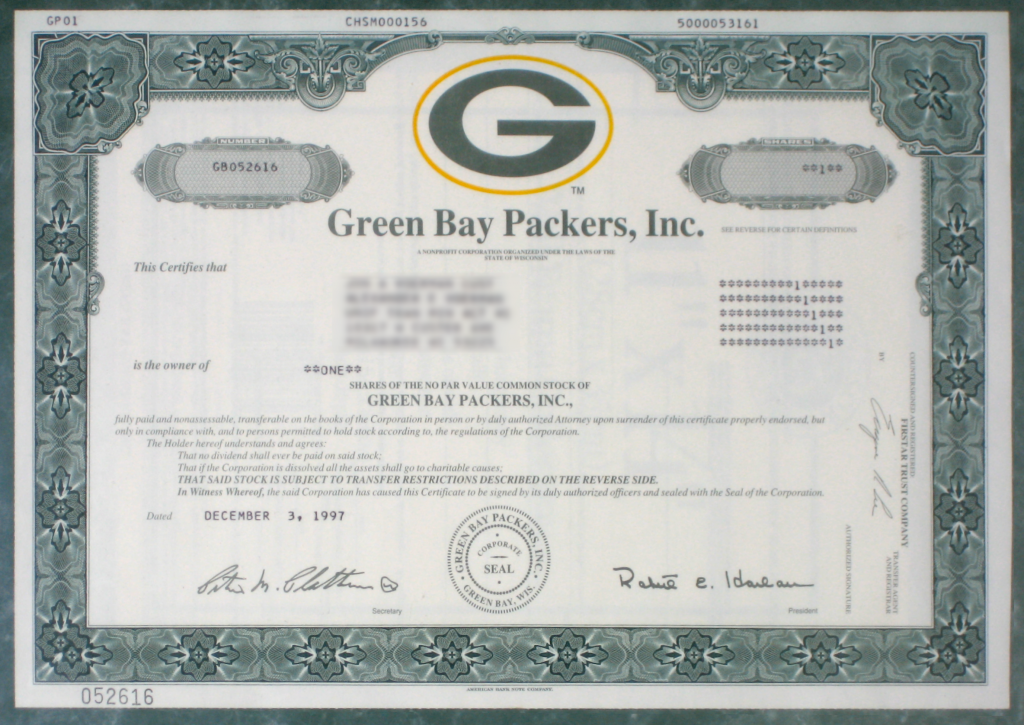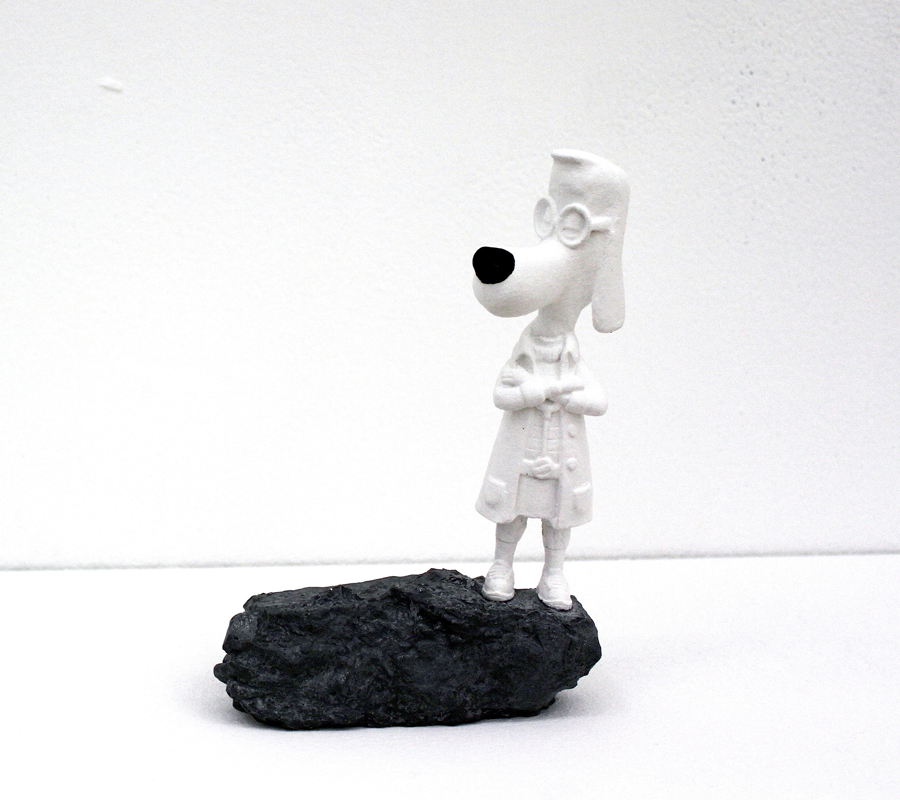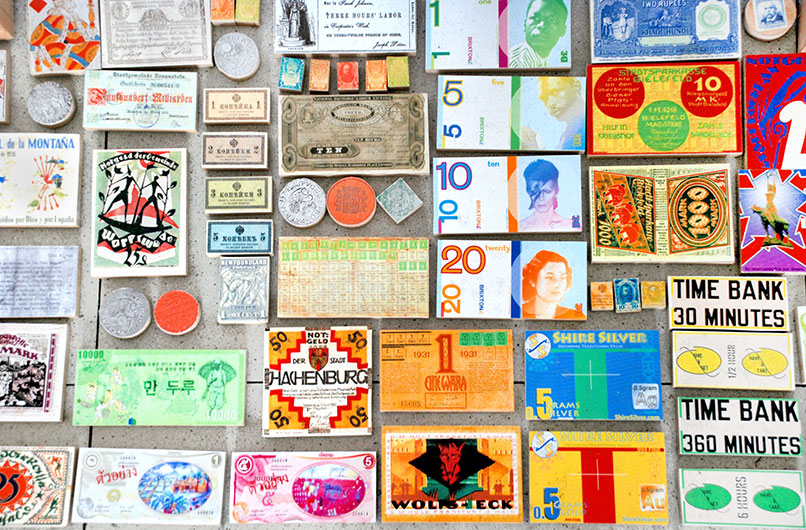It has long been established that digital networks radicalized the ways in which contemporary moving-image and media artworks are distributed. Even before YouTube, network technology was fundamentally changing the ways that media art was being shared through IRC channels, BBSs, and listservs. But as network technology continues to develop and mature, the overall systems of distribution for time-based artists have been relatively the same since the first co-ops and rental agencies like the New York Filmmakers’ Cooperative or Canyon Cinema emerged in the early 1960s. Current institutions for media art have done little to adopt 21st-century technology in an effort to share that work.
Although some contemporary artists working online have abandoned these traditional institutions’ distribution methods, a substantial alternative financial support network for artists still remains to be seen. A large motivation for artists desiring new financial support platforms is the realization that the attention economy of YouTube or Vimeo is not enough to generate actual monetary sustainability for contemporary time-based art. Many freelance artists and media makers have started using the micro-transaction philanthropy website Patreon. Marketed as a service to “help every creator in the world achieve sustainable income,” Patreon does not necessarily provide the kind of community prestige that many contemporary media artists desire. Where artists like Ryan Trecartin and Rafaël Rozendaal have been able to capitalize on their online success by dipping into traditional markets, others are finding that their work does not fit nicely into last century’s distribution and ownership schemes.
As a result of this frustration, a handful of models have emerged to offer artists a way to generate equal amounts of financial gain and attention value. Models like Opening Times and the Film and Video Umbrella in the UK provide evocative starting points for commissioning and otherwise supporting emerging artists working with moving images. Another of these models is a project I worked on as an editor called Undervolt & Co. The idea, started by artist Yoshi Sodeoka, is to create a distribution methodology that resembles that of a small, independent record label. The label “represents” artists and projects and acts as a distribution platform for moving-image work to be sold at a reasonable cost. The trajectory of the project is to create a platform of sharing art in unlimited editions to a wide audience. Instead of making small batches of content and selling them at a high price, the model of Undervolt is instead to make an infinite batch of content that can be sold at a price that most individuals can afford (between $5 and $7). This method encourages sharing content and generating a wide audience of interested individuals while also helping to support artist financially in the production and distribution of their work. Artists and affiliates working with the label then become involved in a kind of collective and collaborative model of mutual support.
When initially launching the project with Sodeoka and co-founder Johnny Woods, I was really interested in looking at other potential examples for distribution and collective ownership. Although the independent record label was a great model to emulate for this project, I was also curious to research models in other cultures/communities and to find potential ways of applying those methodologies to the distribution of moving-image artworks. Instead of thinking about how to apply models like venture capitalism or risk management to moving-image work (since the logic and rhetoric of large corporate enterprises has quickly been adopted by arts funding organizations in the United States like Creative Capital and The Andy Warhol Foundation), I wanted to find other possible ways of creating long-term investment in my community.
Case Study One:
The Green Bay Packers
It would be an understatement to say that the NFL is an incredible moneymaker. Earlier this year the commissioner of the NFL publicly stated that the organization expects to exceed $25 billion in annual revenue by 2027. Although the league itself is classified as a non-for-profit, all the teams playing in it are for-profit entities—all teams except the Green Bay Packers. In the 1920s, the NFL was struggling financially, and in order to prevent the team from falling into bankruptcy and/or moving to another city, five local businessmen decided to incorporate the Packers as a public non-for-profit with Wisconsin’s secretary of state. This group, called The Hungry Five, sold shares of the team to local fans, offering partial ownership of the team and influence in its decision-making processes by forming a board of directors for management and organization. Over the course of the team’s existence, shares have only been offered five times (the most recent offering ended in 2012). These shares contribute to offsetting the team’s finances, and most recently helped finance updating the audio and video system in their stadium, Lambeau Field. The team has over 360,000 shareholders, but the articles of incorporation prevent any single individual owning more than 200,000 of the current 5,011,557 shares, thus preventing central or individual ownership.
As a result of this investment strategy, not only have the Packers been able to stay in Green Bay—the smallest market of any national sports team in North America by far—they also thrived. A consistent threat in the NFC North division, The Packers have won more championships than any other team in the history of the NFL. Although it’s difficult to argue that their success is a direct result of their non-for-profit status, it is interesting to consider how the unique quality of the team’s ownership has fostered a competitive spirit within the franchise. This is particularly interesting considering that the ownership of the team is modeled after a non-competitive investment strategy. Shareholders in the team do not have any dividend on their investment. In other words, investing in the team does not provide any financial return. As a result, the incentive for becoming a shareholder is squarely rooted in fandom.

Packers Stock (a stock certificate for shares of the Green Bay Packers). Courtesy of the Internet.
The distinct quality of the Packers within the NFL not only makes them an interesting case within competitive sports, but might also provide insight into a potential model for media art commissioning and distribution. How could a “franchise” that relies on community investment without the financial problems of return dividends be developed within the art world? One way could be through extending the already existing public outreach of education departments within cultural institutions. For instance, art education satellite programs run by the Guggenheim could offer opportunities for community members to invest in commissioning new works (or works exclusively made from within those communities).
Though the Packers are a unique team (and community), it’s important not be too quick to praise them as some kind of paragon of cultural progressiveness. Although the shareholder model shows the potential strength and value of community-based ownership and support, the Packers are able to share in the revenue of sponsorship deals generated by the NFL, which acts as a financial safety net for player salaries and other team expenses.. Though observing the early history of the Packers’s ability to stay in Green Bay is fascinating as an investigation of community-based investment, other models in different fields have more to offer towards developing sustainable strategies for media art distribution and ownership.
Case Study Two:
Community Supported Agriculture (CSA)
CSAs have gained more notoriety in recent years as a result of the rise of farm-to-table restaurants and the growing demand for local produce. However, community organizations of farmers and consumer advocates have been around for some time. Initially conceived by two European farmers in the mid 1980s, CSAs were formed in the US (and elsewhere) as a way for collectives of non-corporate farmers to reach out to local communities to support their harvest in more direct and less bureaucratic ways. CSAs operate as membership organizations where a local consumer buys small shares of investment in a farm that eventually returns in a small percentage of that farm’s harvest. Individuals participating in a CSA are grouped into what could be called a low- or shared-risk network of investors. The hope is that with enough investors a farm could sustain an entire harvest year of produce with their operation costs covered before production begins. Although shares of a CSA can differ between various farms, a primary principle for this model can be understood as more investment from the community equals higher quality product for the community.
There is more to glean from the CSA model than its investment structure alone. Looking at CSAs solely as a potential investment strategy is precisely the kind of methodology that web-based crowdfunding companies like Kickstarter and Indiegogo have done. These companies view a CSA as a way of distributing risk. But when considering it as a distribution model, other ideological principles play a large role. CSAs have been modeled in a way that allows for community feedback and farmer transparency, following some primary tenets: (1) the farmers’ understanding of their communities’ needs; (2) an established consensual agreements for product delivery between farmers and consumers; (3) community conversation between consumers and farmers with regard to financial limitations; and (4) the assertion that the needs of farmers within their community must be expressed, communicated, and understood by consumers.
These principles establish direct lines of communication between consumers and producers, and acknowledge that producers are integral members of their community. In this way, the labor of farmers within their community is understood as being of great value for creating quality products. This gesture of communicative reciprocity begins to dissolve, through transparency, the class divisions often found between laborers, consumers, business managers, and a local populace.
It is in these lines of transparency and communication where media artists and distribution networks must work the hardest. For too long artists have been divided from their immediate community by a class of consumers who are not interested in transparency. Where CSAs have prospered in providing communities with a platform that fosters positive and nurturing feedback, artists have struggled to find a foothold. The structural methodology of a subscription-based, risk-mitigated, sharing economy is one that many artists and media art ecologies have overlooked, often times instead opting for their corporate cousins: crowdsourced funding. While platforms like Kickstarter have been successful for greenlighting projects that otherwise would not find financial backing, the line of direct communication between the artist and their community is quite limited.
This is not to say that all artists, or that all art communities, have turned a blind eye to the ideological potential of CSAs. A foundational example of this is the project Community Supported Art (also CSA), established by the Chicago art nonprofit Threewalls. Very similar to a farming CSA, this project asks supporters to purchase shares of a season’s worth of artists’ editions and multiples. The shares provide funding for the production of new work and the distribution of artworks to their immediate community. These collections then become a stand-in for other methods of distributing work that would require an art market intervention. By adopting this model, Threewalls initiates a conversation with the artists they want to support with potential consumers. In doing so, the organization wants to encourage consumers to support the arts in a sustainable practice that is separate from the increasingly corporate and predatory art marketplace.

Stephen Reber, Garden Monument, 2015. Aqua resin, urethane, aluminum powder, and paint, 5 x 7 x 2.25 inches. One of five artworks included in the Tabletop Collection, the 2015 edition of the Community Supported Art Chicago program. Courtesy of Threewalls and Community Supported Art Chicago.
Although this kind of implementation of the CSA does provide a refreshing alternative to standard methods of art distribution and ownership, it does so without requesting initial feedback from its local community. The curatorial decision to select the artists prior to the offering of shares limits the potential discourse that normally occurs in standard agriculture CSAs (as suggested by the four primary tenets of these organizations). Another important difference is the way that the ownership of the work is not necessarily distributed, but rather the production of those pieces is offset by consumer investment. The property—which is primarily intellectual in this case—is not inherently distributed. In more traditional CSAs, the land itself can be owned by a community and leased to a farmer for cultivation. Community Supported Art does not have the same kind of holding, which might be for the better, but it would be worthwhile to speculate how that aspect of a traditional CSA could be applied not only to the production of an artist’s work, but also their property.
The question becomes: how can an artist be able to employ a radical approach to distributing his/her intellectual property? One way that artists have begun to initiate this kind of thinking is through the exchange of processes, materials, and goods on the Internet. Many artists working in code distribute access to their intellectual property bundled within the product they create, be it through versioning software like GitHub or through the distribution of open-source libraries and software. Some non-code-based artists working online participate in more subtle ways by releasing their work via Creative Commons, which encourages remixing, re-editing, or appropriation of an artist’s work by peers or strangers. There are regrettably few instances where the packaging of source material is present within the distribution of online works. One could point to a surf club (or group blog) like Spirit Surfers as an example of the way online work could include source material, but mere linking back doesn’t really fit the criteria that I have in mind.
When looking back at the initial models of co-ops and rental agencies, one thing is clear: institutions are exceedingly useful at the creation of property. Be it a rental house, an academy, or a museum, institutions have continually generated countless platforms for the preservation and distribution of intellectual and cultural goods through highly documented forms of ownership. On the flip side, however, these same institutions are not particularly good at fostering feedback from public or non-institutional communities. The CSA as a model, therefore, could be one way of simultaneously generating feedback while continuing to produce and maintain property.
Though CSAs are a powerful example for creating community-based platforms for the distribution of media, these models become a bit difficult to negotiate when the property being cultivated and produced is of an intellectual variety. Another way of looking at this problem could be to ask a series of important questions within media distribution and ownership: What parts of intellectual property should be cultivated by an organization that operates through community investment? Can a community investment model only be applied to artistic production and not to intellectual property? What good would come from consumers having access to an artist’s intellectual property? Do consumers even care about the intellectual property of an artist? What would consumers do with that property? Is there a way to gain partial access to an artist’s property that could support both the artist and a larger community?
Some of these questions begin to show the potential limitations of directly applying the structural and ideological methodology of a CSA to a moving-image distribution network. For instance, a critique of the CSA model is that the altruism of sharing the ownership, production, and distribution of goods within a specific community requires local physical proximity. Though the strength of these organizations is rooted in their commitment to local transparency and communication, how could a model of distributed risk and collective ownership affect larger cultural venues or use network technology to benefit society at large?
Case Study Three:
The Humble Bundle
This last question points to the final case study in this analysis of alternative models of distribution and ownership: the Humble Bundle. This independent video game distribution network uses a name-your-price model to support developers, artists, authors, and charities. The success of this model is evident in that is has recently raised over $50 million for charities like the Electronic Freedom Foundation, the American Red Cross, Doctors Without Borders, and Child’s Play. Galvanizing player communities, video game enthusiasts, and independent graphic novelists through weekly and “flash-sale” bundles have also generated significant profits for a variety of creative individuals. Although the organization also partners with larger companies like Electronic Arts (or EA), the basis of its activities is to act as a charitable distribution network separate from big-name corporate publishers.
Though the organization acts as an altruistic distribution network for independent developers, Humble Bundle also supports the sharing of creative works by avoiding punitive digital rights management (DRM). As a result, when an individual purchases a game, they are able to download the title on a variety of different platforms without the fear of lockouts from publisher companies. In recent times, the problem of DRM has been felt by a wide variety of digital consumers—Apple iTunes purchases, purchasing games through Amazon direct download, or proprietary software preventing users from installing a program on more than one machine with the same license. Distributing digital media without these encumbrances creates a symbolic gesture of trust and equanimity between distributor and consumer. Due to the continued lamentation of proliferating DRM, the Humble organization listened to their community like a CSA would and decided to distribute DRM encryption–free products. This system of communicative feedback between players and developers fosters a distribution network where consumers are invested in the livelihood of the organization and are rewarded with having more control over the ownership of their purchases.
As beneficial as this platform is, the Humble Bundle rarely invites the community into a discussion about what products and what charities should be selected for upcoming bundles and campaigns. Nor does the Humble Bundle model create a system of distributed risk, since the purchases of bundles happen only after a product has been completed. In other words, there is no way to subscribe to or automatically receive bundles at a set price in an effort to sustain the cultivation of creative work for an entire “season.” (The Humble Bundle has recently decided to develop a subscription model). Though the Humble organization does a lot for independent game developers, it does not actively support the creation of new titles from the ground up. This work of financial support and community- activated fundraising within gaming communities still belongs in the hands of Kickstarter and Indiegogo. The purchasing of games and other media through the Humble Bundle does not give consumers ownership of an artist’s intellectual property (though some might argue that having DRM-free media does give users more ownership of their purchases). Though this demand might appear to infringe upon the creative energy of the artists, authors, and developers that get their work distributed through this platform, another way of looking at this is to consider the problems of generating intellectual property at the mercy of crowd fickleness. To do so would be all too similar to the dreaded “design by committee” model. With this in mind the Humble Bundle accomplishes what the CSA cannot: it affects a community beyond the physical proximity of its product distribution network.
Lagging Behind
Looking at these three models of alternative distribution and ownership, it becomes painfully obvious that contemporary moving-image institutions and distribution networks are far behind the curve. Another way of saying this would be to ask: Who are the Hungry Five of the contemporary media art world? If the Packers incorporated their team to protect the small-market interests of their local community almost a hundred years ago, why can’t we do this now? One simple answer is that the market conditions of our time prevent such simplistic reallocation of property. Another is that there is a noticeable difference between the distribution of goods and the decentralization of property. Though the goods produced by the media artists of our time have become increasingly easier to distribute, the long-term support mechanisms of leveraging the intellectual property of artists has significantly weakened. As a result, co-optation of sustainable strategies of decentralized investment in other industries must be taken into consideration for contemporary media art networks. This is particularly the case since these strategies appear to have weathered the recent global economic storm.
However, I’d be remiss to offer these alternatives without also posing a warning: a problem with discussing the “alternative” is that it situates the practice of a community or an individual as operating from a place of marginality. For some, working in such a space might be helpful, but the invocation of the alternative implicitly suggests an aligning of oneself in relation to the mainstream. In other words, it’s hard to resist the urge to ask: alternative to what? Though I believe it is important for media art practices to maintain some sense of autonomy from the market drives of the mainstream, it’s important to consider why the alternative is necessary for ownership and distribution.
It would be a mistake to assume that the alternative is important merely as a way of wedging creative content into more normative forms. Similarly, it would be a mistake to look at the platforms discussed above as a way of repackaging mainstream content into so-called alternative networks for the sake of exploiting these models for generating profits. For emerging networks of distribution and ownership to be truly alternative, the content itself needs to reflect the channels in which it travels. We need creative alternatives to the standard procedures for getting work out there and sustainable ways of supporting the practices of artists, just as we need the kind of work that subverts, pushes, undermines, and challenges the mainstream. The development of any and all new models of distribution and ownership networks should happen simultaneously and in mutual support with those who are themselves concerned with the radical advancement of the arts.



